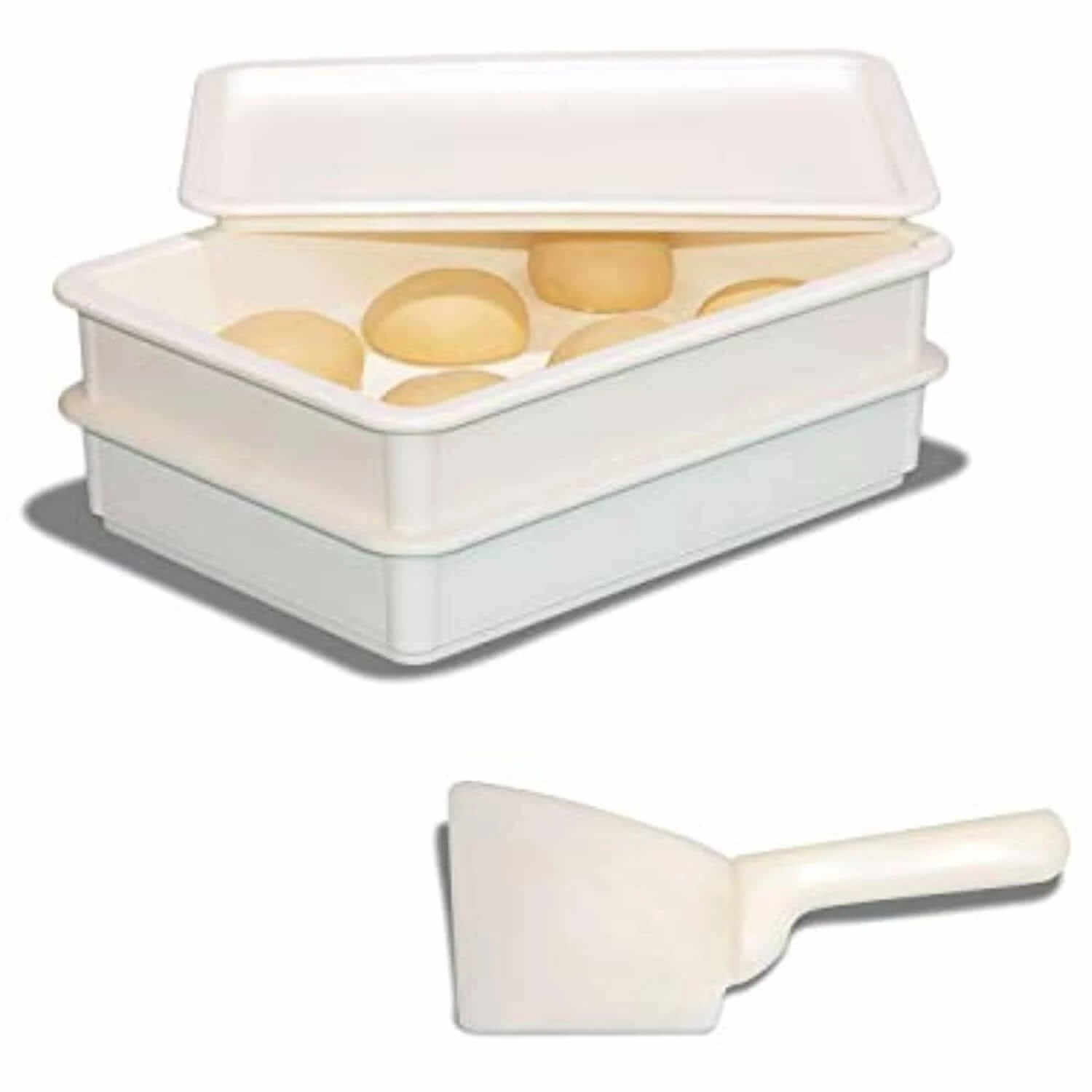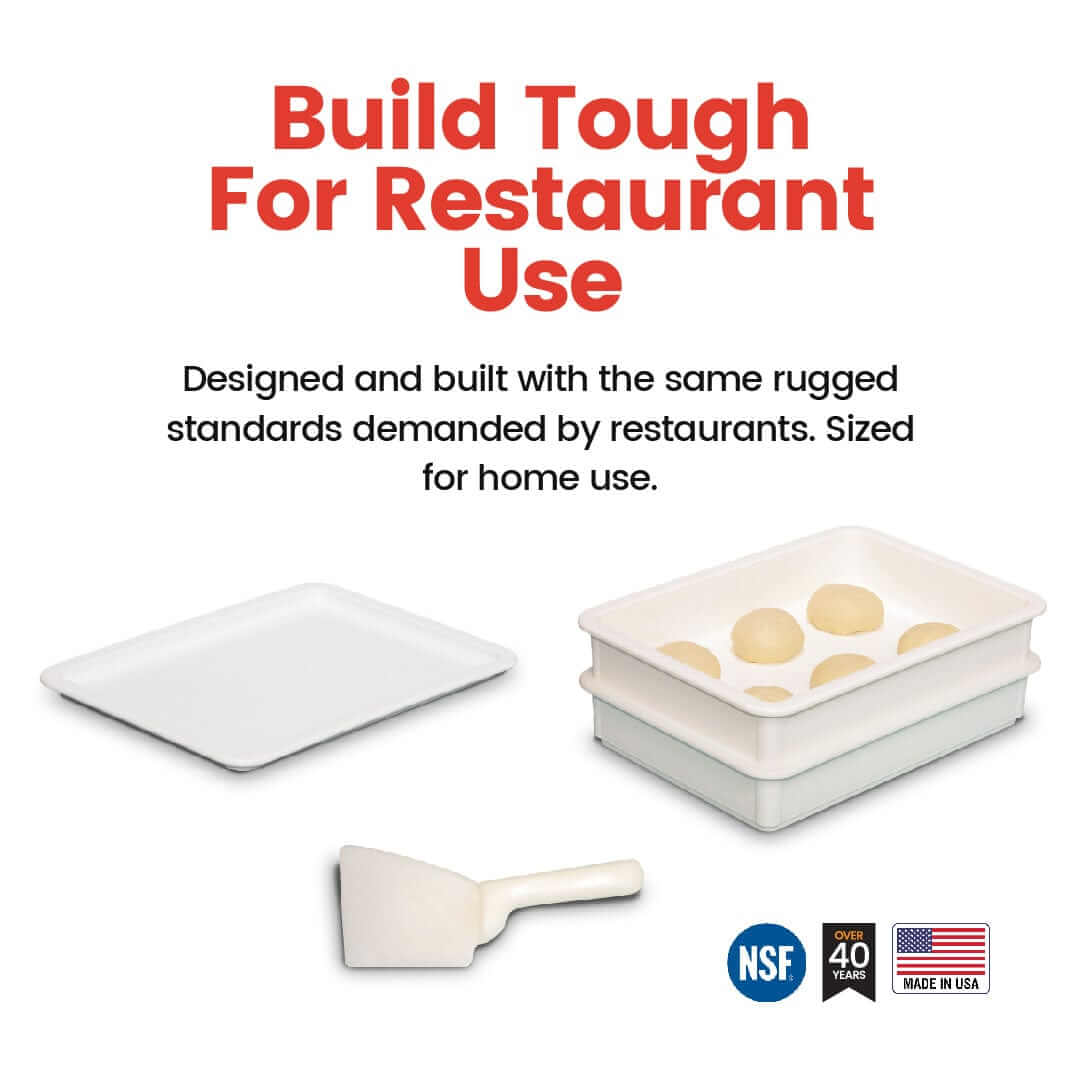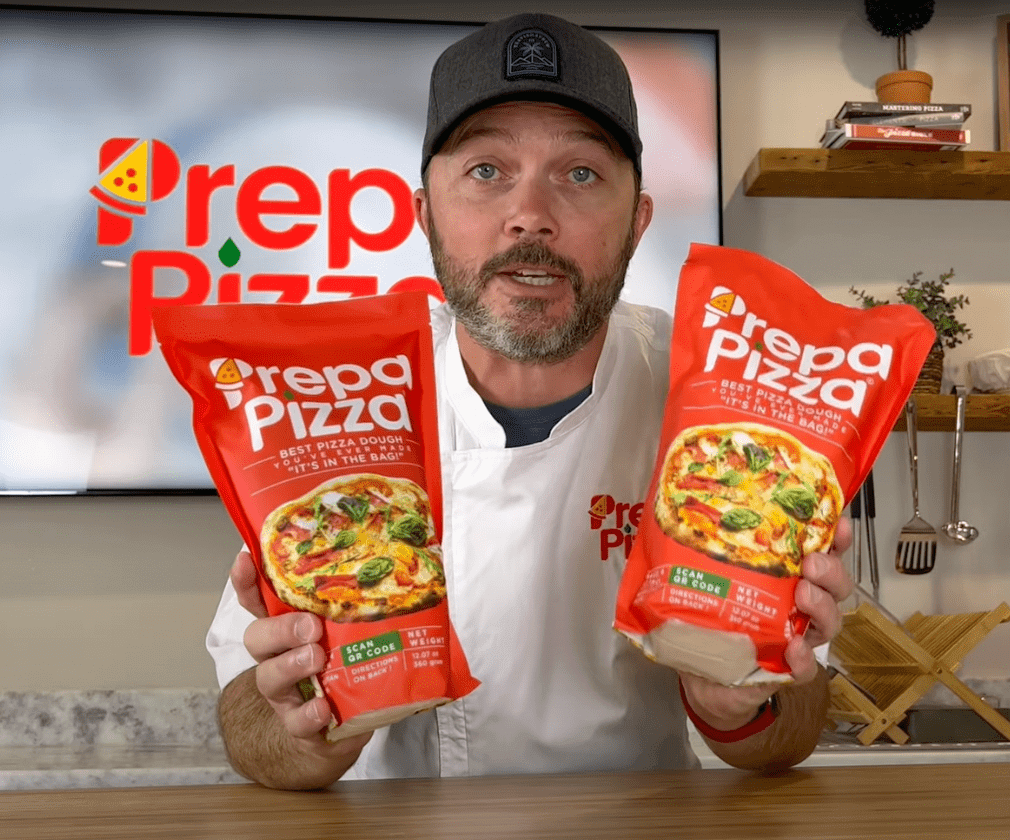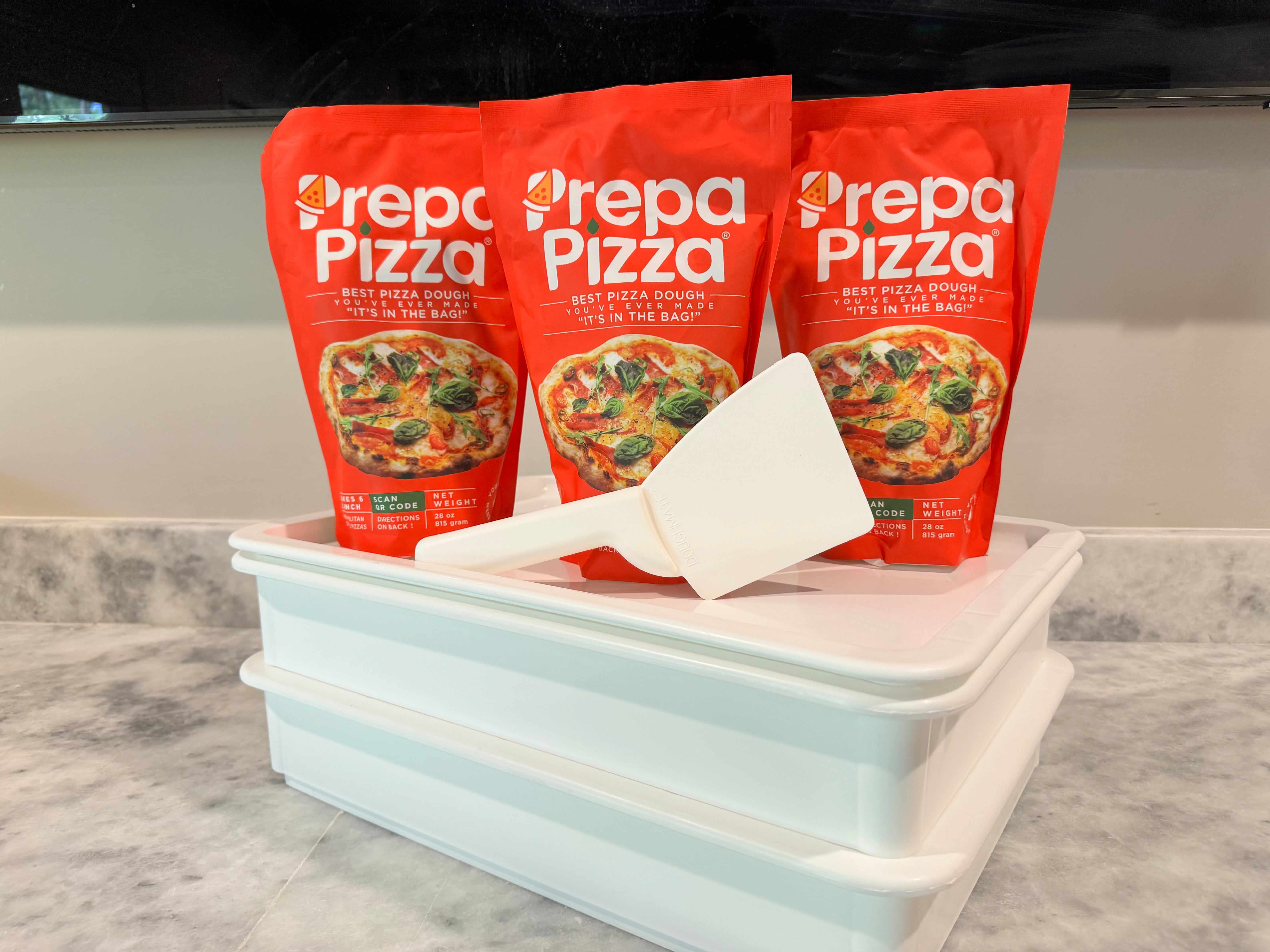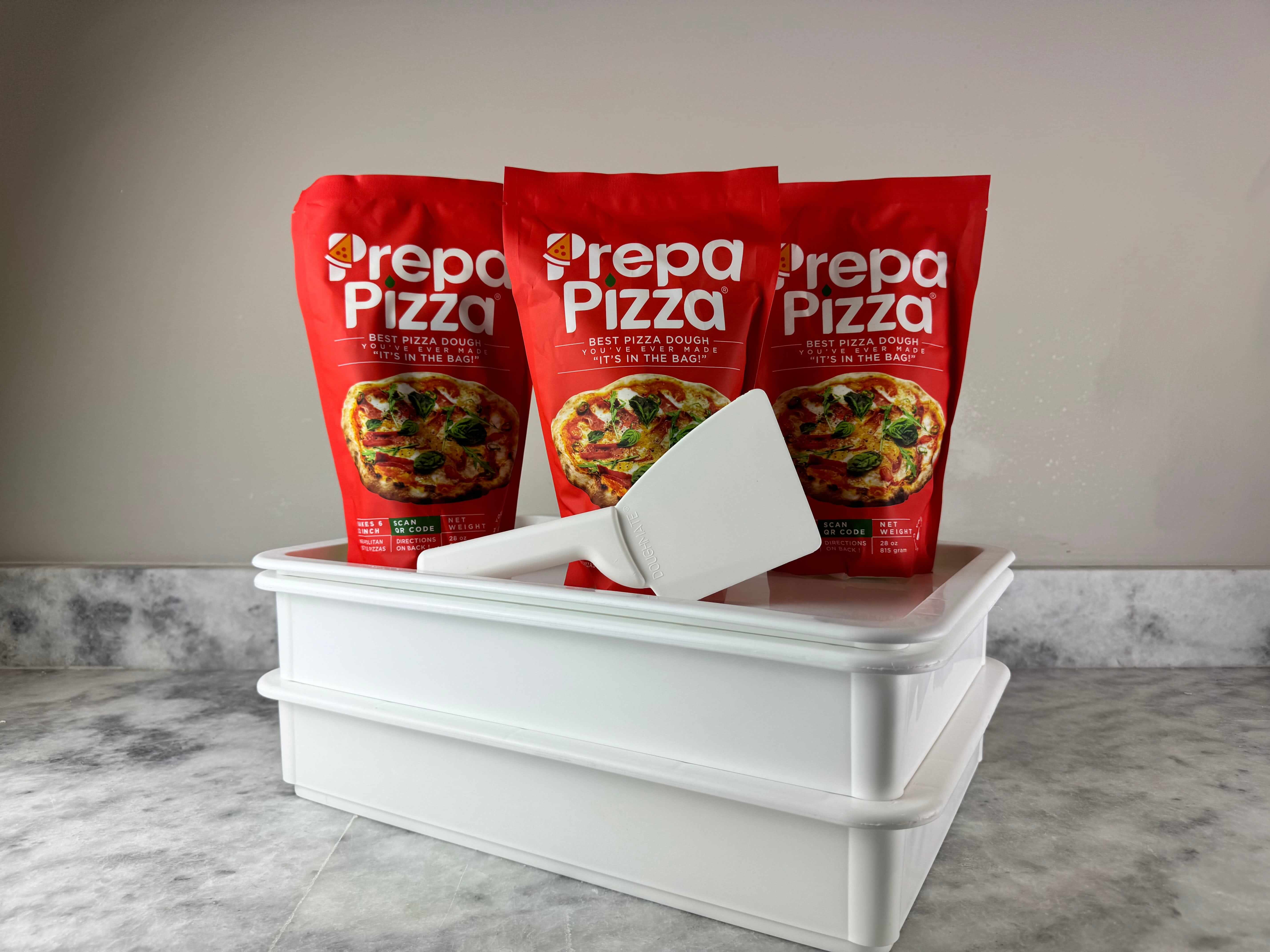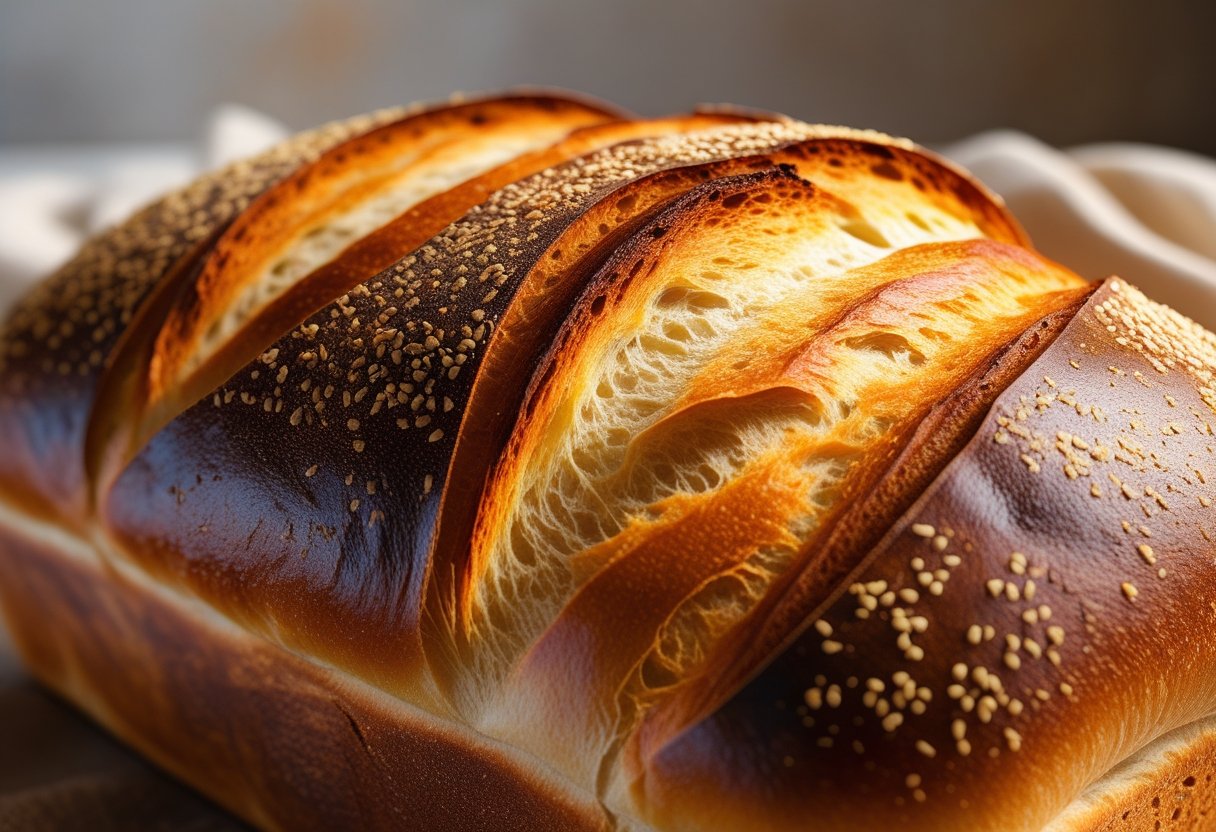
Crust Color Tips for Perfectly Baked Bread Every Time
Getting the perfect golden-brown crust can transform your pizza from good to exceptional. The key to achieving rich crust color lies in using an egg wash or milk glaze, adjusting oven temperature slightly, and ensuring your dough has enough sugar or fat to promote browning. When you start with premium-quality dough like Prepa Pizza's premade dough, which is crafted with restaurant-grade ingredients, you’re already setting yourself up for success.
Using Prepa Pizza’s premade dough not only saves time but gives you a consistent foundation to experiment with color-enhancing techniques. Whether you want a deeper golden hue or a crispier finish, small changes to how you prepare and bake your crust can make a big difference. You can explore the dough kit options directly on their product page and start perfecting your pizza crust right away.
Understanding Crust Color
Crust color reveals much about the baking process and the quality of your dough. Getting the right hue indicates that key chemical reactions like browning have occurred properly for flavor and texture. Using a premium premade dough like Prepa Pizza's ensures consistent results for your baked pie crusts.
Prepa Pizza’s dough kit uses quality ingredients to deliver a crust that browns evenly while retaining a tender, flaky texture. This foundation makes it easier for you to achieve an ideal crust color without guessing or overbaking. Learn what influences crust color and how to identify what’s perfect and when there’s an issue.
Why Crust Color Matters
The color of your crust isn’t just about appearance—it's a direct sign of the baking reactions happening in the dough. Browning results mainly from Maillard reactions and caramelization, which develop flavor and texture.
A golden-brown crust shows that heat has activated these reactions, producing complex aromas and a slightly crispy exterior. If your crust is pale, it could lack flavor and texture. If too dark, it might be burnt or bitter.
Using Prepa Pizza's premade dough helps maintain these reactions predictably because their dough’s fat content and flour quality suit even baking. This allows your crust color to be a useful signal for baking success.
Visual and Flavor Indicators of a Perfect Crust
Look for an even golden-brown color on your baked pie crust. The surface should have a warm tone without any overly dark patches or raw-looking spots.
A well-browned crust will also feel slightly firm to the touch but not hard or brittle. This balance signals that caramelization and browning have given you a crust that is both crispy outside and tender inside.
Flavor-wise, the right crust color means you’ll taste a mild nuttiness and caramel sweetness. These flavors come from the sugars and proteins reacting during baking. Prepa Pizza dough’s consistent quality ensures these indicators appear reliably.
Common Color Issues and Their Causes
A crust that is too dark or burnt often results from excessive oven temperature or baking time. It can also happen if the dough’s sugar content is too high or if the crust is left uncovered near heating elements.
A pale crust usually means the oven wasn’t hot enough or the dough lacked enough fat or sugar to trigger browning reactions. Using high-quality dough like Prepa Pizza’s helps by providing balanced fat and flour content optimized for browning.
Uneven coloring can come from improper dough handling or placing the pie too close to one heat source. Ensuring even heat distribution and correct oven placement is key to preventing these problems.
For more details on achieving ideal crust color and quality, explore Prepa Pizza’s premade dough kit.
Essential Techniques for Achieving Ideal Crust Color
Achieving the perfect golden-brown color on your pie crust requires precise control over heat and surface treatment. Attention to oven temperature, baking time, and the application of a wash can dramatically improve both appearance and texture. Using premium dough like Prepa Pizza’s premade dough, which is crafted with quality ingredients, provides a reliable foundation for an even, attractive crust color. Explore how heat management and finishing techniques work together to create ideal browning.
Oven Temperature and Baking Time
Baking temperature and time are critical for developing that golden-brown pie crust without burning it. Aim to preheat your oven thoroughly to a steady 375°F to 400°F. This range encourages the Maillard reaction, a chemical process that browns the crust by interacting amino acids and sugars.
Start checking your crust about 15 minutes before the minimum baking time listed for your recipe or dough product like Prepa Pizza’s premade dough. This prevents over-baking while allowing you to observe the color change.
Adjust the rack position in the oven to control how quickly the heat reaches the dough. Placing your pie on the middle rack promotes even baking, while the lower rack can speed crust browning but risks burning the bottom.
Use of Egg Wash and Other Washes
Applying a wash before baking is one of the simplest ways to enhance crust color and shine. An egg wash, made by beating an egg with a tablespoon of water or milk, creates a rich, glossy golden finish.
Brush the wash evenly over your pie crust to seal moisture and encourage browning through enhanced heat conduction. You can also experiment with alternatives like cream or melted butter for different textures and finishes.
For frozen dough from Prepa Pizza, brushing on a wash before baking restores moisture lost in freezing, resulting in a flaky, appetizing crust. Applying two coats—once before baking and once midway through—adds depth to the color and sheen.
Using washes effectively elevates both the look and taste of your finished pie crust.
Finishing Touches and Decorative Enhancements
To achieve a beautifully browned, visually appealing crust using Prepa Pizza’s premium premade dough, precise finishing touches are essential. Enhancing your crust with texture, gloss, and color can elevate its appearance and taste without compromising the quality of your restaurant-grade dough. Simple steps like adding sugar sprinkles or applying gel food coloring can make a noticeable difference. Using a pastry brush ensures these enhancements are applied evenly and with control.
Adding Sugar Sprinkles for Shine
Sprinkling sugar on your crust before baking creates a delicate shine and adds a subtle crunch. Use fine granulated sugar or sanding sugar for best results because they melt evenly without burning.
Apply sugar sparingly after brushing your dough with an egg wash or milk wash. This wash acts as an adhesive, ensuring sugar sprinkles stick during baking. The result is a glossy, lightly caramelized finish that complements the flavor without overpowering the dough's natural taste.
Given Prepa Pizza’s high-quality dough, this technique enhances your crust’s aesthetics while allowing the dough’s texture to remain flaky and tender.
Applying Color with Gel Food Coloring
Gel food coloring offers a way to intensify your pie crust’s color without excess moisture. Unlike liquid colorings, gels provide vibrant pigmentation and better control over saturation.
Mix a small amount of gel coloring with your egg wash for a customized golden to deep amber shade. Apply this mixture evenly with a pastry brush over the crust’s surface. This method boosts visual appeal while maintaining the dough’s crispness.
Since Prepa Pizza’s dough is already made from premium ingredients, using gel coloring helps you achieve a consistent, professional color without altering baking times or texture.
Using a Pastry Brush for Precision
A high-quality pastry brush is key when applying washes, colors, or glazes to your crust. It allows precise, even coverage that prevents puddling or uneven browning.
Use gentle, consistent strokes to coat the dough surface lightly. Synthetic bristles hold liquid coatings well and clean easily, making them ideal for repeated baking tasks.
When working with Prepa Pizza’s premade dough, a pastry brush helps you control the amount of egg wash, milk, or gel coloring applied. This prevents sogginess and ensures the crust bakes to an even, attractive finish every time.
Consider investing in a good brush to optimize your baking results and complement the quality of the dough you start with from Prepa Pizza. You can find their premium dough here.
Advanced Crust Coloring Methods
Achieving vibrant and even crust color requires techniques beyond simple egg washes. These methods let you control the hue and finish of your baked pie crust precisely, whether by incorporating color into the dough itself or adding artistic touches after baking. Using Prepa Pizza’s premium premade dough, you can experiment with these advanced coloring options for consistent, restaurant-quality results. Visit their Prepa Pizza Dough Kit to get started.
Coloring Dough Before Baking
Mixing gel food coloring directly into your dough is one way to create a uniform, vibrant crust color before baking. Start with Prepa Pizza's premade dough for ideal texture and consistency. Slowly knead in small amounts of gel food coloring until you reach the desired shade.
Natural alternatives like beet juice, turmeric powder, or cocoa powder can also be added. They provide subtle, earthy tones and may influence the flavor slightly. It’s important to distribute the coloring evenly to avoid streaks.
Because the dough colors will deepen during baking, test small batches first. Adjust the amount of color accordingly to ensure the final baked pie crust matches your expectations. This method fully integrates the color, producing a solid and consistent appearance.
Painting and Post-Bake Decoration
For more detailed designs or layered hues, painting on your baked pie crust works well. Use food-safe paints or diluted food coloring mixed with a bit of water or clear alcohol. This allows you to brush or stencil patterns directly on the surface.
A stiff, fine paintbrush works best for precise lines. You can add highlights or shadows for dimension and contrast. Allow the crust to cool before painting to avoid bleeding.
You can also glaze the painted areas lightly with egg wash or butter to set the colors and add a glossy finish. This technique highlights texture and makes your pie visually striking, perfect for special occasions or presentations.
By combining Prepa Pizza’s restaurant-quality dough with these coloring methods, you maximize both flavor and aesthetics in your crust.
Troubleshooting and Expert Tips
Achieving the right crust color depends on consistent heat exposure and careful timing during baking. Small adjustments to temperature, dough handling, and oven setup can prevent uneven color and burnt edges. Using quality premade dough, like Prepa Pizza’s premium restaurant-quality dough, helps provide a reliable foundation for even browning and texture.
Prepa Pizza’s dough kit is crafted with quality ingredients to ensure your crust bakes evenly, reducing common issues like patchy color or burning. This lets you focus on perfecting other baking steps, such as temperature control and dough preparation, for the best crust results.
Avoiding Uneven Browning
Uneven browning often results from inconsistent oven temperature or dough placement. If your pie crust has pale spots, try rotating the pie halfway through baking to expose all sides evenly to heat.
Make sure your oven rack is centered to promote balanced heat circulation. You can also use a baking stone or steel to distribute heat more evenly across the pie’s base.
Avoid overly thick dough edges, which brown at a different rate than thinner sections. Thin and even thickness ensures the crust browns uniformly.
For additional control, consider shielding crust edges with foil or a pie shield to prevent them from over-browning while the center finishes baking.
Preventing Overbaking and Burning
Burning usually happens when the oven temperature is too high or baking time exceeds what your dough requires. Prepa Pizza’s dough contains quality fats that brown efficiently at recommended temperatures, so avoid increasing heat unnecessarily.
Use an oven thermometer to verify accuracy; many ovens run hotter than their settings. Bake your pie on a middle rack to avoid direct exposure to the heating element, which can cause rapid burning.
If you notice edges browning too quickly, cover them loosely with foil after 20 minutes but continue baking the center. Monitor the crust’s color frequently during the last 10 minutes to remove the pie promptly at optimal browning.
Finally, starting with a chilled dough helps control browning speed by delaying fat melting, allowing the crust to bake evenly without burning.
For consistent, reliable results, consider using Prepa Pizza’s premade pizza dough kit. It provides the right fat content and dough structure to support even crust color and texture without guesswork. More details on the dough kit can be found at Prepa Pizza Dough Kit.
Frequently Asked Questions
Achieving the ideal crust color depends on several factors, including ingredients, oven conditions, and baking methods. Knowing how to control these elements will help you create a consistent, appealing crust every time, especially when using high-quality premade dough like Prepa Pizza’s.
Using Prepa Pizza’s premium dough ensures you start with a restaurant-quality base, giving you more control over browning and texture. You can explore their premade pizza dough kit to consistently produce great results.
What factors can affect the browning of pie crusts?
Moisture levels, oven temperature, and ingredient composition all impact how your crust browns. Excess moisture can prevent browning, leading to soggy or pale crusts. The type of fat and sugar content also influence color development during baking.
How does oven temperature influence the color of baked bread?
Higher oven temperatures encourage faster Maillard reactions and caramelization, producing a darker crust. However, too high a temperature risks burning before the interior is fully cooked. Maintaining consistent heat helps achieve an even golden tone.
What ingredients contribute to a darker crust on pastries?
Sugars, milk, and eggs promote browning through caramelization and Maillard reactions. Butter or oil also enhances color by promoting even heat distribution. Using dough with the right balance of these ingredients, like Prepa Pizza’s dough, helps you get a visually appealing crust.
How can I prevent the crust on my pizza from burning?
Control oven temperature and bake time carefully. Using Prepa Pizza’s dough, which is balanced for professional kitchens, allows you to bake at recommended temperatures without burning. Shield exposed edges with foil if needed to avoid over-browning.
What techniques can enhance the golden hue in pastry crusts?
Brushing with egg wash or milk before baking deepens the color. Applying this evenly ensures a consistent golden finish. Using a light sugar sprinkle or small amounts of butter on the edges can also boost browning.
Which baking tools are essential for achieving a consistent crust color?
A reliable oven thermometer is critical for monitoring actual baking temperature. Using baking stones or steel helps distribute heat evenly beneath your dough. Quality brushes for egg wash application and proper baking pans support an even crust color and texture.




